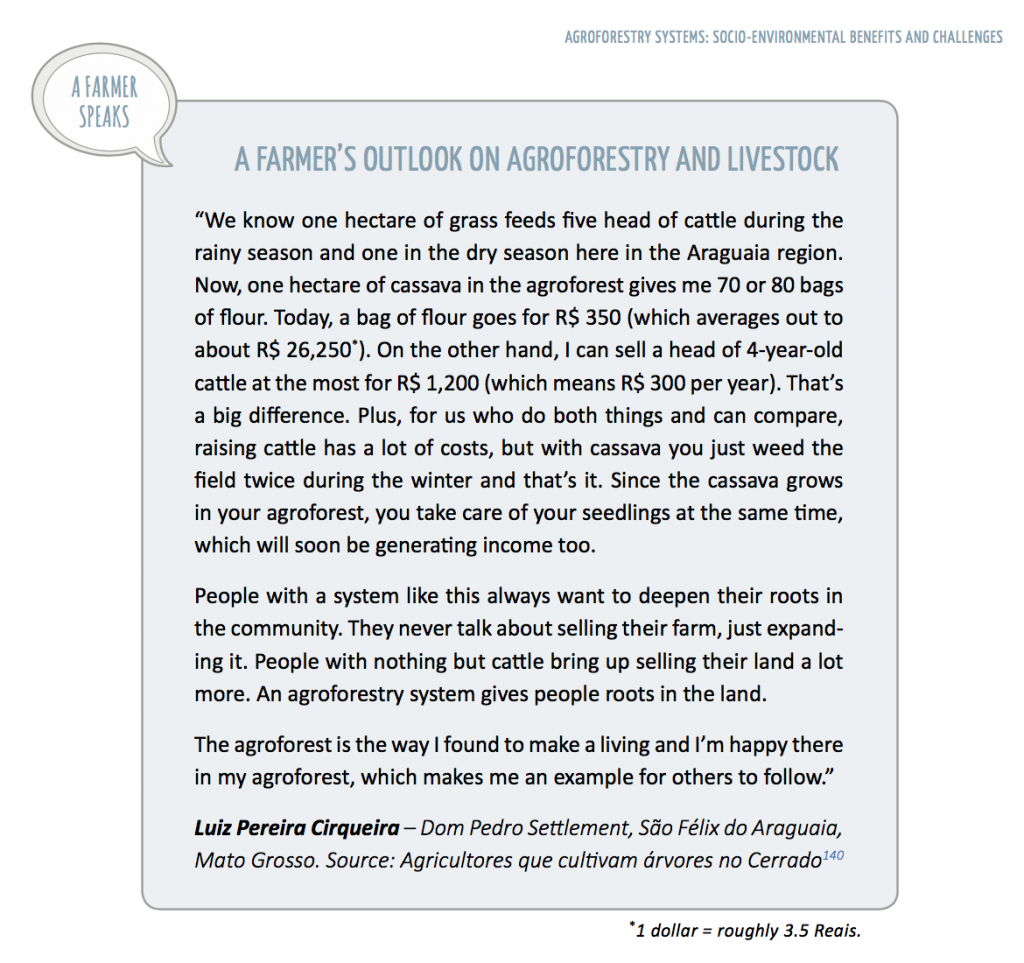How to reconcile conservation and production. Options for Brazil’s Cerrado and Caatinga biomes
The FTA-funded technical guideline aiming to guide the adoption of agroforestry systems (AFS) to restore and recover altered and degraded areas, using strategies that reconcile conservation with social benefits, originally published in Portuguese, was just recently translated in English and presented at COP25 in Madrid, by Andrew Miccolis (see slides here).
The guideline was developed through a participatory research process involving extensionists, farmers, researchers, policy-makers and practitioners in the field of restoration and AFS.
The team began by analyzing norms governing the use of AFS in environmental protection areas (Permanent Preservation Areas – PPAs and Legal Reserves – LRs), to make their practical implications in the field clear to extensionists, farmers and policy-makers.
A broad-ranging survey of relevant literature investigated the feasibility of AFS and the most suitable systems to accomplish the ecological and social goals of restoration was conducted. In May 2015, during a participatory seminar on “Conservation with Agroforestry: pathways to restoration on family farms,” 70 participants drafted principles and criteria to reconcile conservation with production. The team then systematically analyzed 19 AFS experiences to draw lessons for best practices to be replicated, including visits to 16 farmers who shared their examples of promising management systems and practices, and consulted experts. With those inputs, recommendations are proposed to overcome challenges facing AFS and to draft enabling legislation for Brazil’s new Forest Code.

An approach to social-environmental diagnoses in AFS planning attuned to the aspirations and conditions of families in their own environments was also developed. For some of the most common situations, like degraded pastures and areas with secondary plant growth, we 11 agroforestry options to be adapted to each farm’s specific characteristics are illustrated.
Recommendations include detailed descriptions of 19 key species for the recovery of degraded areas, and a total of 130 species deemed important for AFS-based restoration in a general table with functional attributes. Although this book focuses on Brazil’s Cerrado and Caatinga biomes, the approach for socio-environmental diagnoses, the principles and criteria for selecting species and designing systems, as well as the implementation and management techniques, can be applied in other regions as well.
This research was conducted by World Agroforestry (ICRAF) as part of the CGIAR Research Program on Forests, Trees and Agroforestry, the world’s largest research-for-development program to enhance the role of forests, trees and agroforestry in sustainable development and food security and to address climate change. The Center for International Forestry Research (CIFOR) leads the Research Program in partnership with Bioversity International, Centro Agronómico Tropical de Investigación y Enseñanza (CATIE), Centre de Coopération Internationale en Recherche Agronomique pour le Développement (CIRAD), International Bamboo and Rattan Organisation (INBAR), ICRAF and Tropenbos International (TBI). The work of the Research Program is supported by the CGIAR Trust Fund.











